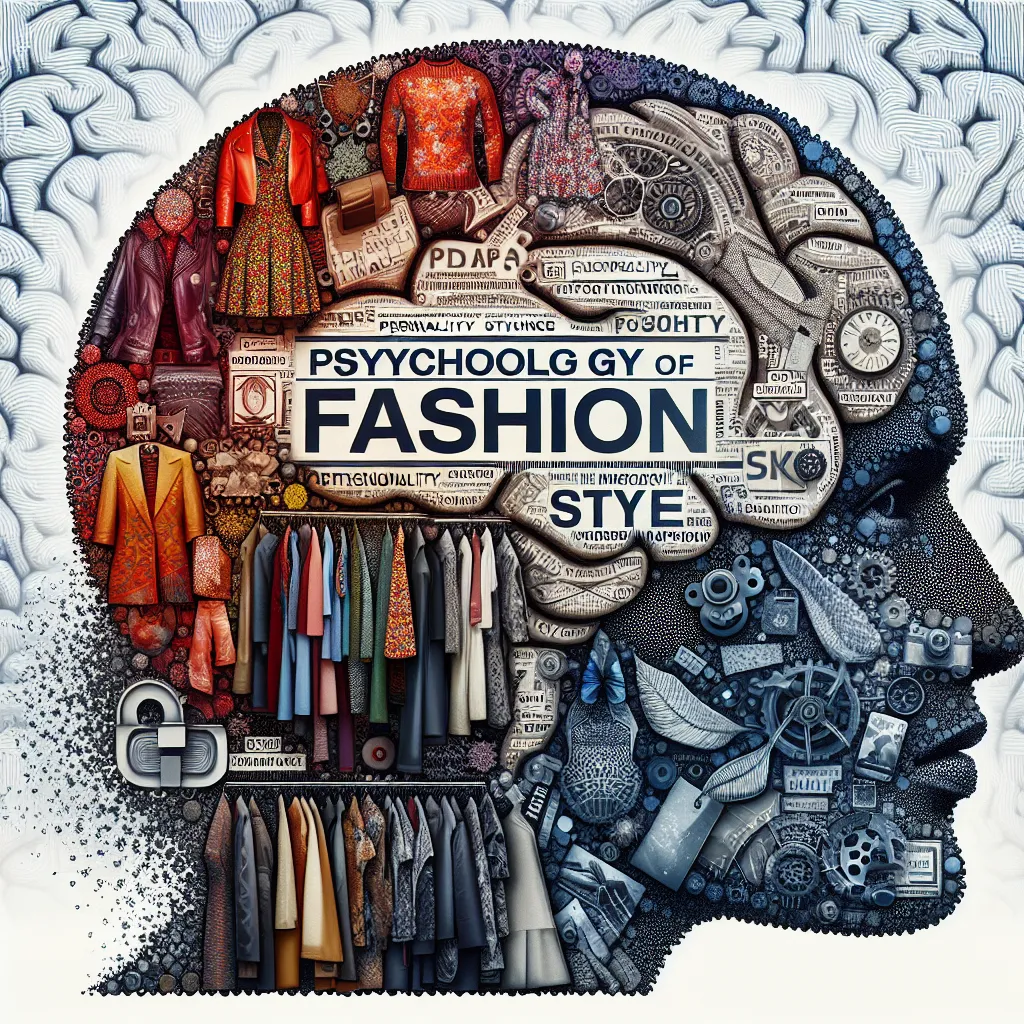Fashion is an integral part of our lives, influencing not just our choices in apparel but also playing a pivotal role in our social dynamics and self-expression. It has often been said that you are what you wear, and to a significant extent, it is true. The Psychology of Fashion delves into the depths of Personality and Style, exploring the intricate relationship between what we wear, why we wear it, and how it reflects and influences our inner selves.
At the core of fashion psychology lies the understanding of the self. Personality is understood to be a stable set of characteristics and tendencies that influence an individual’s behaviors and thought patterns, including their sartorial choices. Through the lens of various psychological theories, the selection of clothes can be seen as an extension of one’s personality, with every accessory and silhouette silently communicating aspects of our temperament, values, and beliefs to the world.
Fashion serves dual purposes – it is a means of self-expression and a device for impression management. When we dress in a certain way, we speak to those around us without saying a word. Our style can project confidence, professionalism, eccentricity, or even rebellion. In this sense, the clothes we select become a non-verbal language, a nuanced form of communication that can convey a first impression that is often lasting.
Personal style is frequently a manifestation of our psychological needs, driven by the famous hierarchy proposed by Abraham Maslow. People use fashion to fulfill basic needs, like comfort and protection, while also addressing higher-level psychological needs such as belonging (through wearing group or cultural attire), esteem (via luxury or branded clothing), and self-actualization (expressing individuality through unique styles). Consequently, our wardrobe choices can give others a glimpse into our psychological situation and current needs.
Moreover, personality types as described by the Big Five model—Openness, Conscientiousness, Extraversion, Agreeableness, and Neuroticism—correlate with different fashion preferences. Open individuals may gravitate towards eclectic and novel fashion, Conscientious individuals often favor a more classic and conservative style, Extraverts may choose brighter colors and bold patterns that attract attention, Agreeable individuals tend to pick more functional and comfortable pieces, while those higher in Neuroticism might opt for clothing that they perceive to shield them from negative judgment.
Color psychology is another fascinating facet that influences the world of fashion. Colors evoke specific emotions and can induce moods – red is often associated with energy, passion, and action while blue signifies calmness and stability. As individuals draw from the color palette to dress every day, they are, in essence, aligning their mood and emotions with their outward presentation, often unconsciously.
Social comparison theory also plays a pivotal role in the fashion industry. With social media and a constant barrage of images of celebrities and other influencers, people often compare their appearance and attire to others’. This can influence their style choices and can lead to an endless pursuit of the latest trends or unique pieces that can ensure they stand out in the social stratum.
The aspirational nature of fashion is in evidence when individuals choose items that align with their ideal self, the person they strive to be, even if that vision does not match their current reality. Through what might be termed ‘enclothed cognition,’ people may even experience shifts in their confidence and attitude by dressing in a way that represents their aspirational self. It is clear that fashion does not merely reflect who we are but can also shape who we become.
Symbolic interactionism further elaborates on the idea that the symbols found in our attire, including logos, styles, and even the fabric, carry particular meanings in our interactions. What we wear can symbolize our status, profession, or allegiance to a particular subculture or movement. For example, wearing a suit can signify professionalism in a corporate setting, while a leather jacket might connect an individual with the rebellious spirit of biker culture.
Nostalgia is another psychological phenomenon that intersects with fashion. Vintage fashion trends revive past eras, allowing people to reconnect with bygone times, often perceived as simpler or more stylish. This can be linked to the concept of collective memory and the comforting feeling that comes from reminiscing shared historical and personal moments.
Fashion also has a significant influence on self-esteem and body image. When individuals feel good in what they are wearing, their self-esteem can get a boost. However, the reverse can also be true, with the pressure to adhere to societal standards of beauty and style leading to negative self-evaluation and body image issues. Fashion psychology seeks to understand and address the delicate balance between promoting self-expression and mitigating the harmful effects of such pressures.
The interplay between fashion, culture, and identity cannot be understated. Traditional attire around the world is rich with history and meaning, often signifying one’s cultural heritage and identity. In today’s globalized world, fashion can also be a tool for cultural exchange, with people incorporating elements from various cultures into their style as a form of cultural appreciation and self-expression.
Seasonal changes also reflect psychological adaptations to the environment. Heavier, warmer fabrics and layers in the colder months can offer comfort and reassurance, while lighter, breezy materials in summer correspond with a relaxed state of mind. Even the change in style and color preferences seasonally is a nod to the human psyche’s responsiveness to the environment.
Sustainability and ethical considerations in fashion reflect a growing consciousness of consumers’ attitudes towards the environment and society. With trends like slow fashion and ethical branding, consumers are increasingly showing a preference for fashion choices that align with their values, advocating for responsible consumption.
The fashion industry has taken note of the profound psychological implications of style and personality. Brands are increasingly employing psychologists to understand consumer behavior better, improve marketing strategies, and design products that fulfill deeper psychological needs. Customization and personalized shopping experiences are direct outcomes of such psychological insights, catering to the individual’s need for uniqueness and self-expression.
In conclusion, the link between psychology, personality, and fashion is multifaceted and profound. Our choice of attire is a complex interplay of personal identity, cultural influences, social dynamics, emotional states, and psychological needs. Understanding the psychology of fashion offers us a deeper appreciation of ourselves and the fabric that weaves through our society – literally and metaphorically. By honoring individual expression while fostering positive self-esteem and inclusivity, the world of fashion can continue to be an enriching field not just for self-expression, but for personal and social growth as well.



Leave a Comment